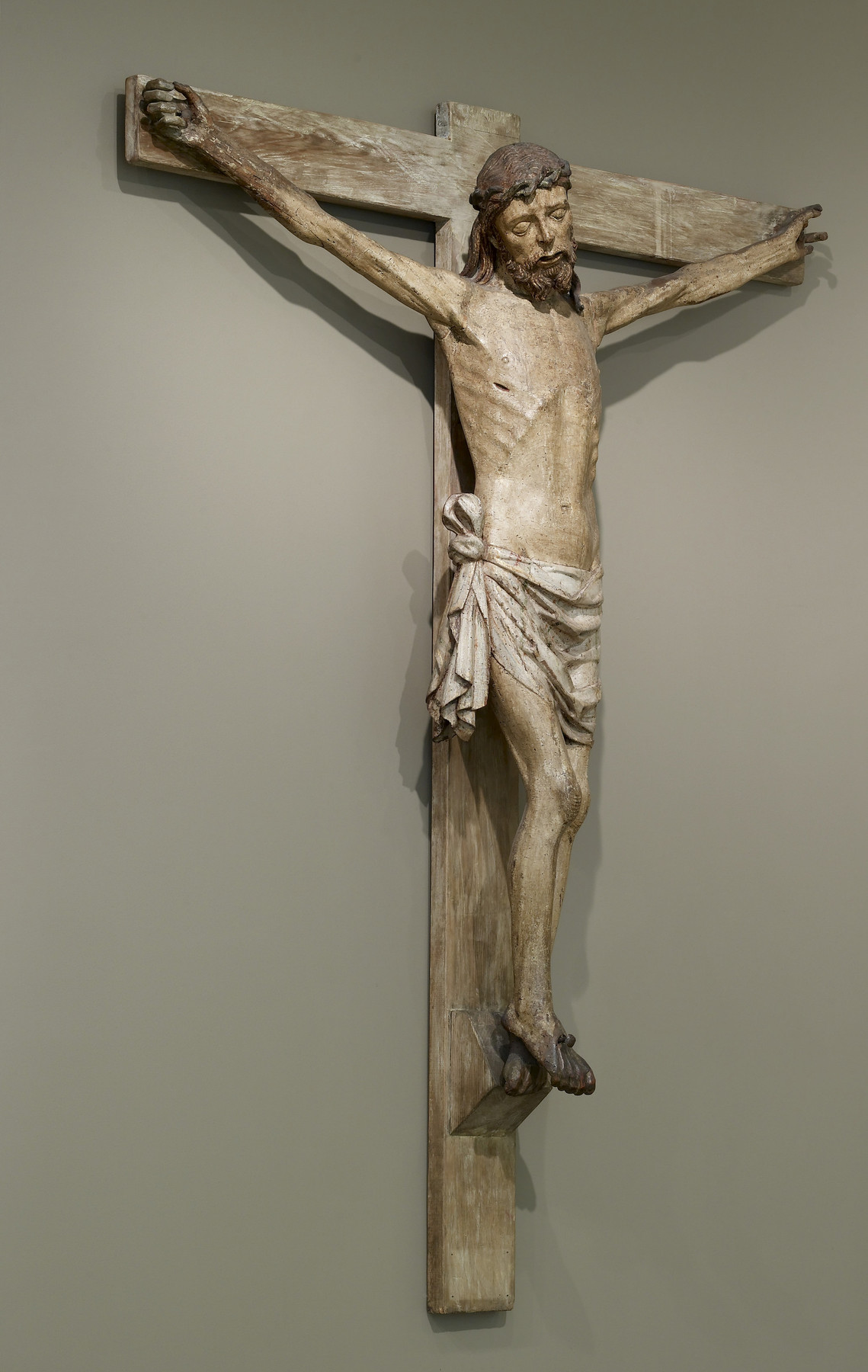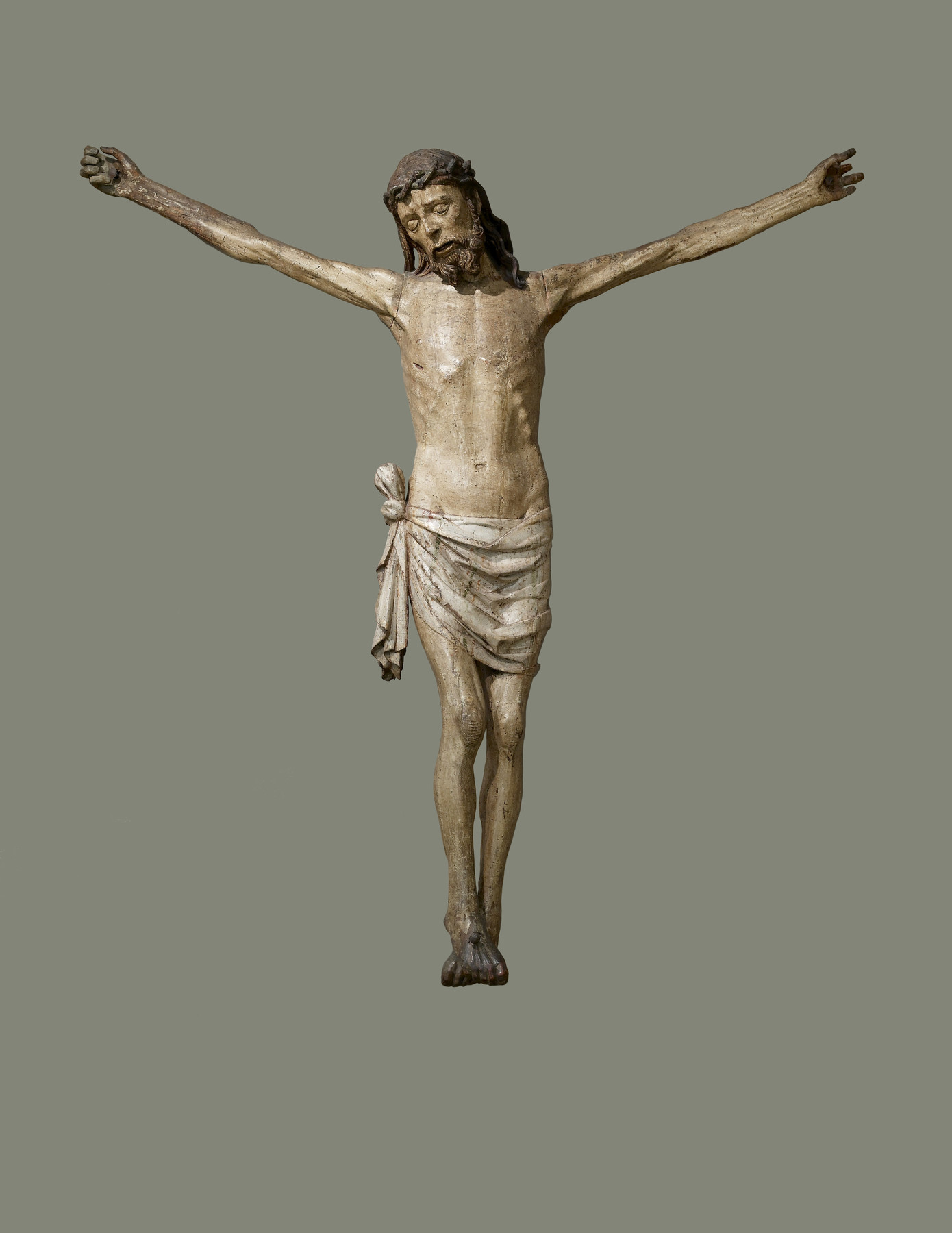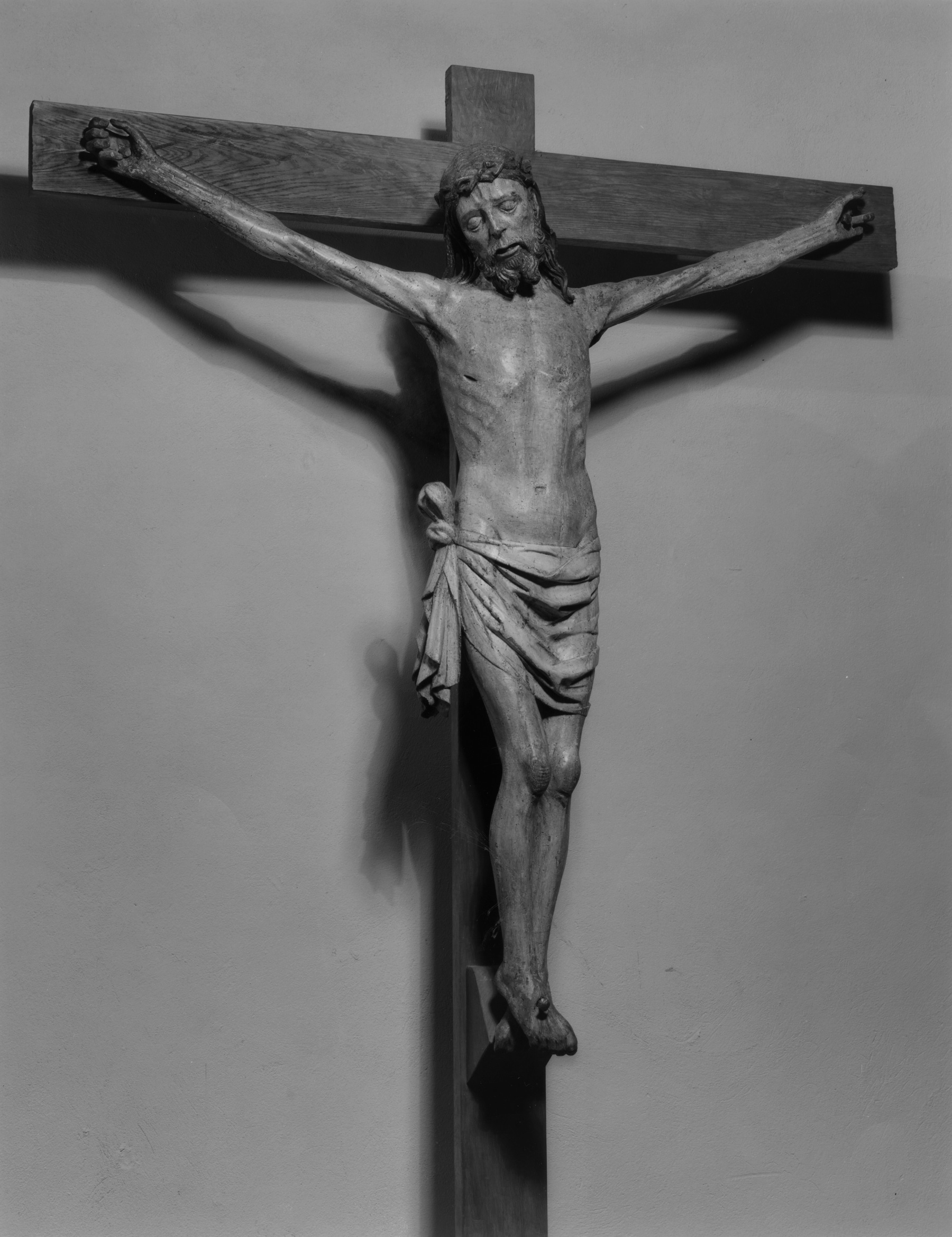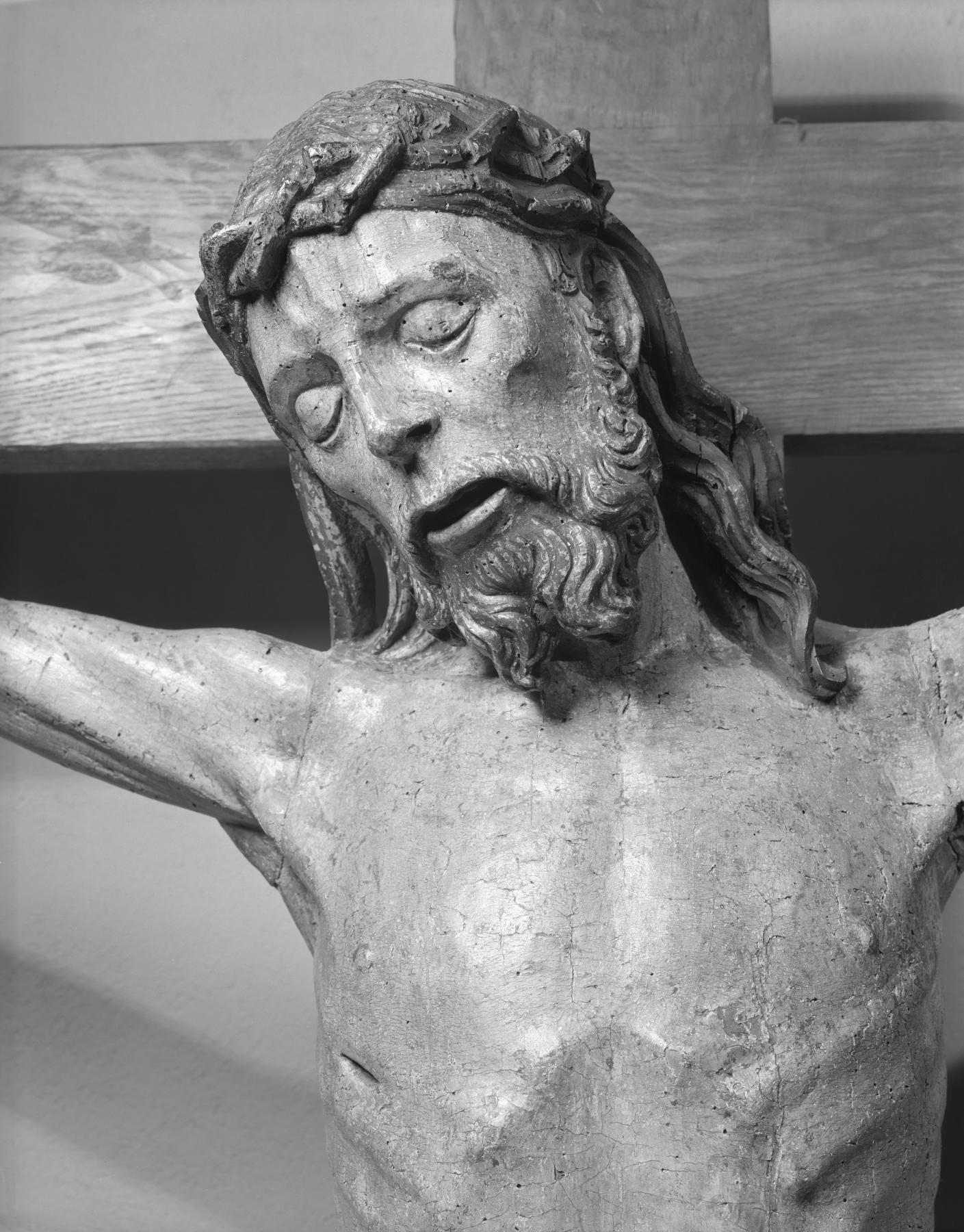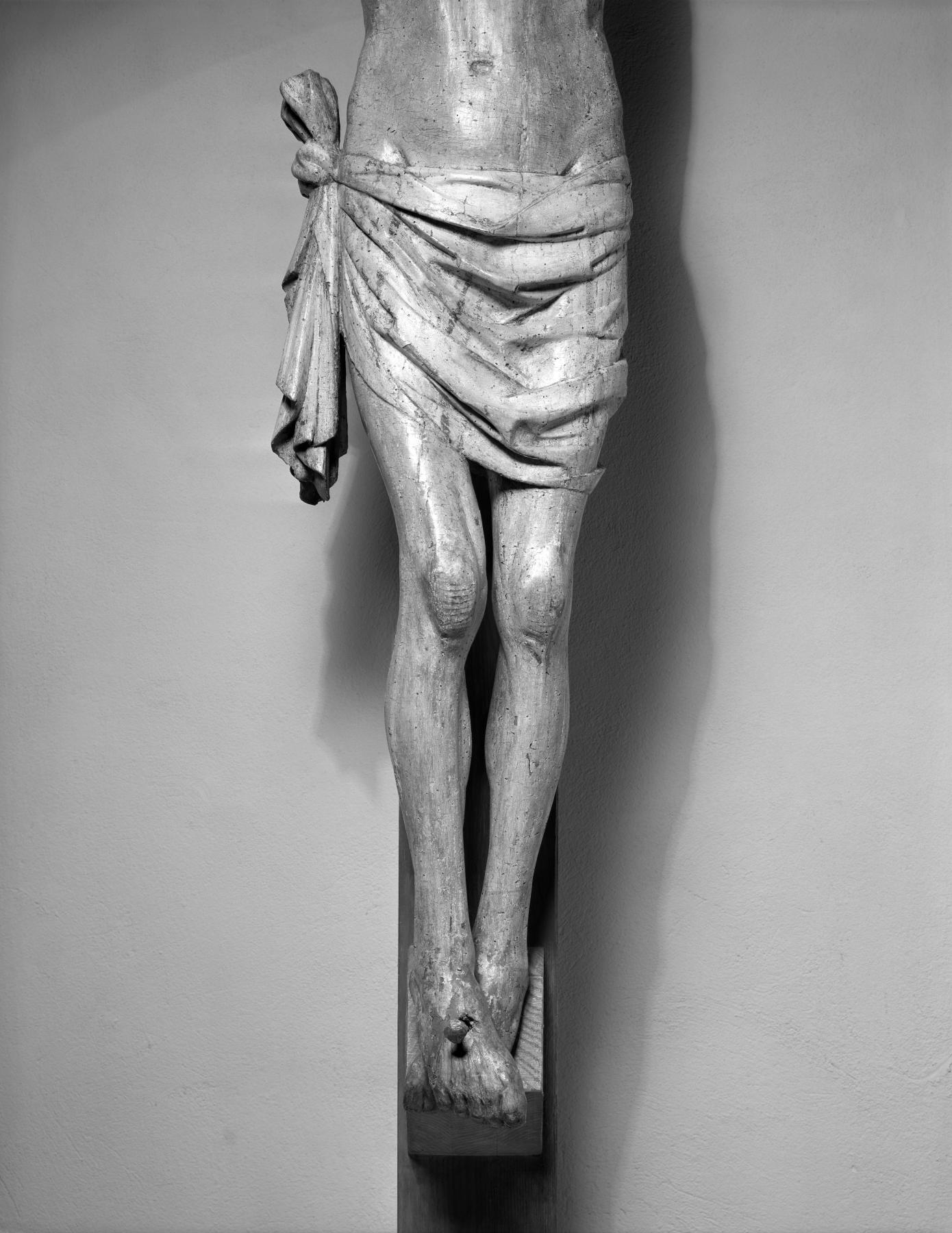Crucified Christ
(Renaissance Europe )
Possibly made for a rural church, this nearly life-size Christ is crudely carved, but the simplicity of the presentation contributes to its intensity and power. The arms are necessarily made from separate pieces of wood. The thin, elongated body, stretched arms pulled from their sockets, and pained expression go beyond ordinary realism to emphasize the enormity of Christ's sacrifice.
The characterization of Christ’s face, with three deep vertical groves in the brow, is very effective at expressing stress when seen from a distance and is an idiosyncrasy that helps attribute the work to Scalamanzo.
Provenance
Provenance (from the French provenir, 'to come from/forth') is the chronology of the ownership, custody, or location of a historical object. Learn more about provenance at the Walters.
Joseph Brummer, Paris and New York; Brummer Sale, Parke-Bernet, New York, June 8, 1949, Pt. III, no. 219A; purchased by David Rosen, Baltimore, 1949; given to Walters Art Museum, 1950.
Exhibitions
| 2016-2017 | A Feast for the Senses: Art and Experience in Medieval Europe. The Walters Art Museum, Baltimore; The John and Mable Ringling Museum of Art, Sarasota. |
| 1958 | Religious Art of the Western World. Dallas Museum of Art, Dallas. |
Geographies
Belgium, Flanders (Place of Origin)
Measurements
Christ H: 59 1/8 × W: 56 3/4 × D: 9 3/4 in. (150.18 × 144.15 × 24.77 cm); Cross H: 76 1/8 × W: 56 3/4 × D: 12 3/4 in. (193.36 × 144.15 × 32.39 cm)
Credit Line
Gift of David Rosen, 1950
Location in Museum
Accession Number
In libraries, galleries, museums, and archives, an accession number is a unique identifier assigned to each object in the collection.
In libraries, galleries, museums, and archives, an accession number is a unique identifier assigned to each object in the collection.
27.544


